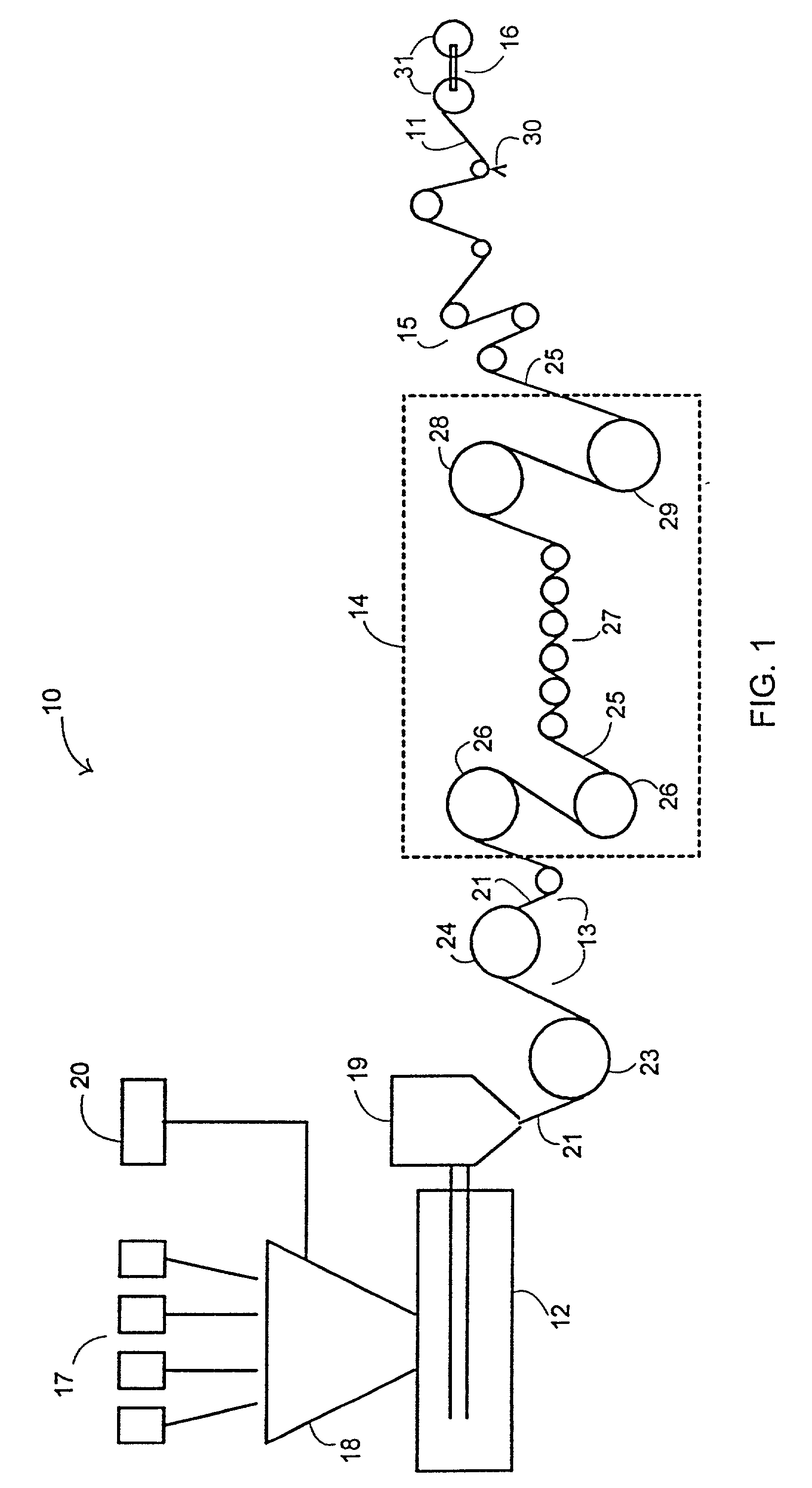High bi-directional strength monolayer polymeric film and method of fabrication
a polymeric film, high-bias strength technology, applied in the field of polymeric films, can solve the problems of paper as a label substrate, paper curling, general aesthetics of paper,
- Summary
- Abstract
- Description
- Claims
- Application Information
AI Technical Summary
Benefits of technology
Problems solved by technology
Method used
Image
Examples
Embodiment Construction
[0028] The FIGURE shows a simplified diagrammatic view of a film fabrication system 10 used in the novel fabrication process of the present invention to create a novel monolayer printable film facestock 11. Primary components of the system 10 include an extruder 12, a casting unit 13, a film-orientation unit 14, a corona treatment unit 15, and an end-product winder 16.
[0029] As earlier noted, the novel technique of the present invention is to combine a primary structural material, preferably a polypropylene homopolymer or a polypropylene copolymer, with a secondary printable material, preferably vinyl-acetate or methacrylate in a carrier, which carrier may be polyethylene, prior to delivery to the extruder 12. It is to be noted that the primary structural material may be polyethylene or a copolymer of polyethylene and polypropylene. The materials may be in pellet or other suitable form, and may include one or more supplemental components delivered via chutes of a component feeder 17...
PUM
| Property | Measurement | Unit |
|---|---|---|
| Angle | aaaaa | aaaaa |
| Percent by mass | aaaaa | aaaaa |
| Temperature | aaaaa | aaaaa |
Abstract
Description
Claims
Application Information
 Login to View More
Login to View More - R&D
- Intellectual Property
- Life Sciences
- Materials
- Tech Scout
- Unparalleled Data Quality
- Higher Quality Content
- 60% Fewer Hallucinations
Browse by: Latest US Patents, China's latest patents, Technical Efficacy Thesaurus, Application Domain, Technology Topic, Popular Technical Reports.
© 2025 PatSnap. All rights reserved.Legal|Privacy policy|Modern Slavery Act Transparency Statement|Sitemap|About US| Contact US: help@patsnap.com

